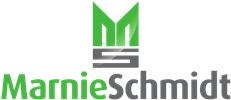 7.1.6 Organizational knowledge
7.1.6 Organizational knowledge
Well, here we are at week 19 already! I hope you’re enjoying the discussion thus far. I have really enjoyed hearing everyone’s input (and on topics OTHER than risk based thinking!) There’s a lot more to this revision than just that one hot topic!
Like I’ve mentioned in previous weeks, I’m still not a fan of the structure or layout of this particular section, with “resources” jumping back and forth from level to level, but I do like the content of this section. But I like it for an unexpected reason. I think I have a weird take on this one.
The revision states, “The organization shall determine the knowledge necessary for the operation of its processes and to achieve conformity of products and services.” What I like about this is its simplicity. It really sets the stage to answer the question about how much documentation the organization should create. Who’s following me here? The whole problem with the ISO standards (or just about any standard for that matter) is the misunderstanding that they are all about documenting everything. This simple statement helps draw boundaries about exactly how much stuff should be documented! There are very specific places in the standard where it clearly states documentation is required (and those are more records than anything else). But when an organization sets out to write a quality manual (which has been removed as a requirement in this revision), or procedures, how does one decide what should be documented? One way is to ask “what knowledge do I need for the operation of my processes and to make good product/service?” This section doesn’t say these things should be documented, but boy, it does say the organization must have a collection of knowledge, so what better option than a library of sorts or a learning plan for each position? Could be a series of videos, could be a manual and procedures, could be just about anything as long as there is a known treasure of knowledge that is recognized and maintained (and continuously analyzed for gaps).
I like this particularly because I think it does a pretty good job at trying to build a bridge and dovetail training into the quality system. Many companies miss this opportunity when constructing their QMS. The quality system is its own thing (including procedures and work instructions, which ultimately are only used for audit purposes), and then training stands alone somewhere else with the “on the job and real knowledge” needed to actually do the work. What a waste, and what a shame. The most important procedures in the building are those which describe the processes well enough that the people can use them to do the work. Anything beyond that is wasteful and unnecessary. Writing and maintaining two (or more) sets of work instructions is crazy.
Which brings us to, “The knowledge shall be maintained, and made available to the extent necessary”. These types of statements are intended to allow latitude in compliance so that there is some common sense in what is the “extent necessary” depending on the complexity and size of the operation. But I think the real meat of this statement is the requirement that the knowledge be maintained and controlled. First, we have to know what we need to know, then keep it alive and in good condition and accessible and available.
Next up is, “When addressing changing needs and trends, the organization shall consider its current knowledge and determine how to acquire or access the necessary additional knowledge.” Well, we are all here together to address a changing need (in the draft revision of this standard). And there are many others. Think about changes in methods, technology, communications. How do we keep up?
The “notes” in this section are fascinating to me. They smack of trying to capture the “tribal knowledge” all organizations share and then institutionalize it so that each generation needn’t revisit the same learning curve over and over. Isn’t that something we all struggle with? Think of tool and die makers and other very specialized skills. These skill sets tend to be coveted by the people who have worked very hard to attain them. And without a viable apprenticeship program (or understanding the knowledge we need), knowledge is difficult to capture and maintain.
“NOTE 1 Organizational knowledge can include information such as intellectual property and lessons learned.
NOTE 2 To obtain the knowledge required, the organization can consider:
a) internal sources (e.g. learning from failures and successful projects, capturing undocumented knowledge and experience of topical experts within the organization);
b) external sources (e.g. standards, academia, conferences, gathering knowledge with customers or providers).”
THIS WEEK’S HOMEWORK
Look back at the processes you listed as critical for your organization. These are the processes your organization must understand and have sufficient knowledge to support. What is the process for understanding (inventorying) what knowledge should be maintained? Is it reviewed? How does your organization spot trends or changes? How does it update its knowledge when it’s needed? Look at the “notes” section as well. Is there a system for addressing these opportunities in particular? Please share your thoughts!
For more information on building your organizational knowledge, check out my book,
TRIBAL KNOWLEDGE – The Practical Use of ISO, Lean & Six-Sigma Together
Or let me work with you one-on-one. My 8 Week Boot Camp is a powerful workshop to do a full review of each of your processes and build a robust quality management system and organizational knowledge base in as little as 8 weeks!
Stay involved and engaged – SUBSCRIBE!
